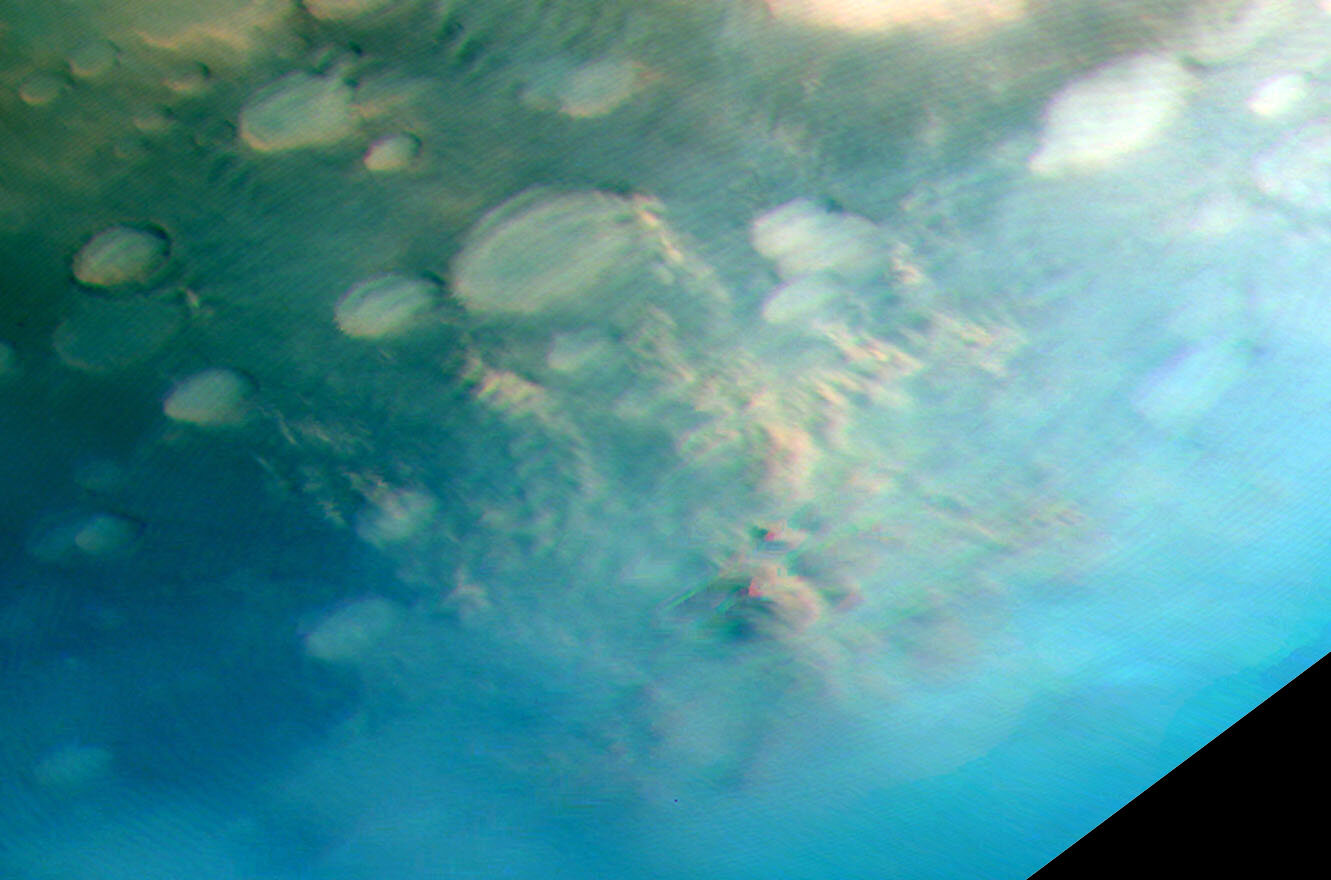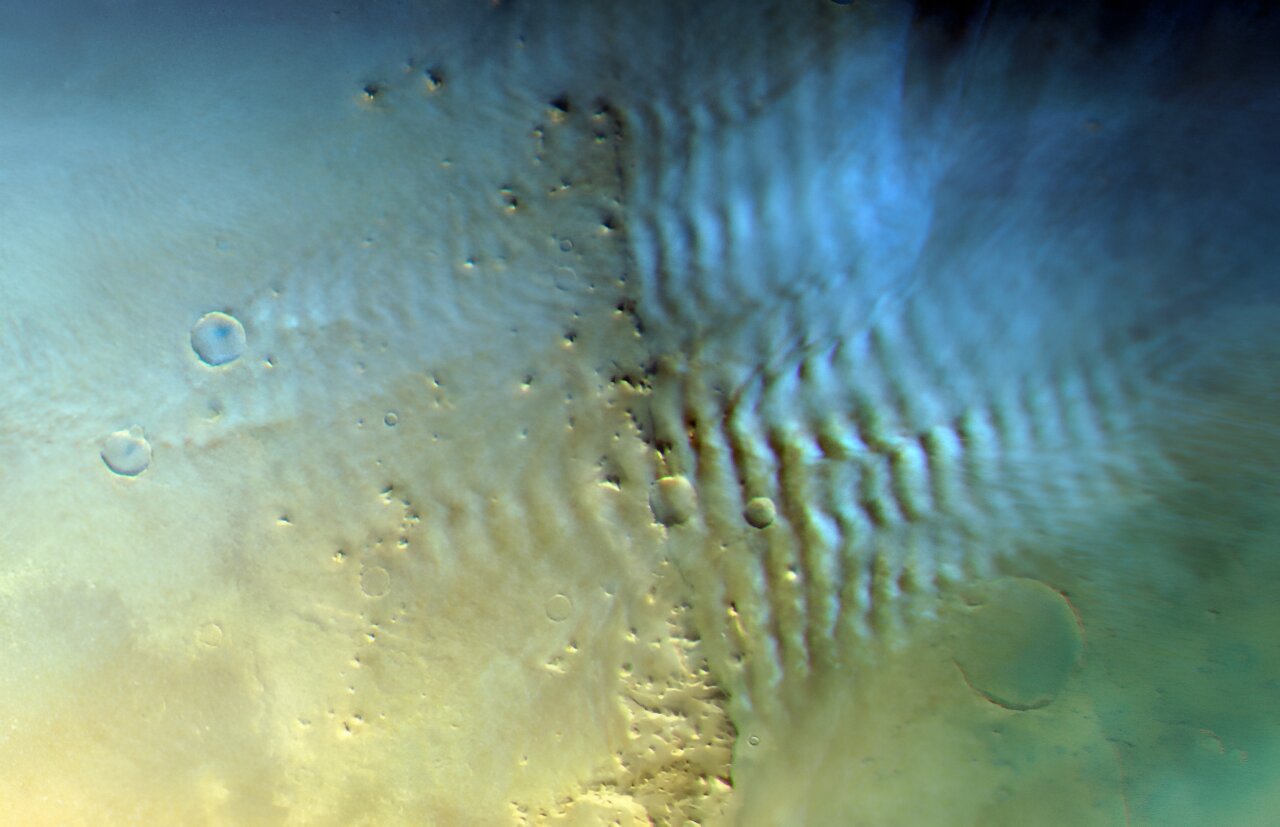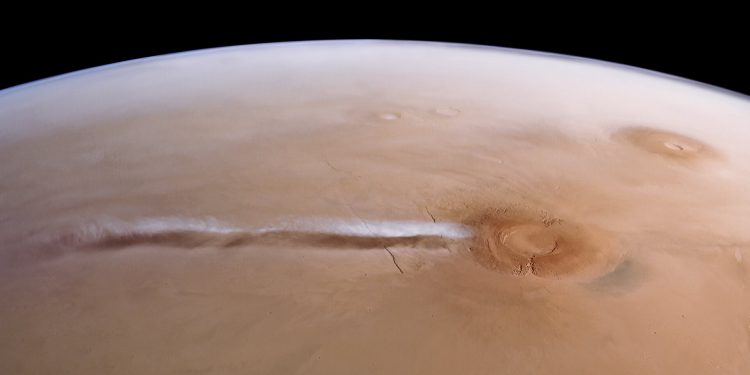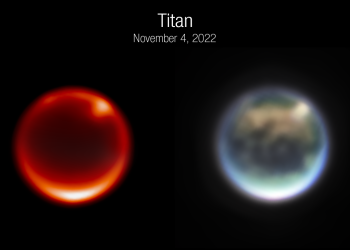Cloud enthusiasts and researchers now have a powerful new tool to explore the mesmerizing cloud formations and atmospheric phenomena on Mars. The German Aerospace Centre (DLR) in Berlin has compiled a browsable database featuring 20 years of cloud and storm images captured by the High-Resolution Stereo Camera (HRSC) aboard the European Space Agency’s (ESA) Mars Express spacecraft. This incredible resource, called the Mars ‘Cloud Atlas,’ was presented by Daniela Tirsch of DLR at the Europlanet Science Congress (EPSC) 2024 in Berlin.

Despite Mars’ thin atmosphere, a variety of cloud formations and dust storms form from water and carbon dioxide ice crystals, as well as dust particles. “Clouds on Mars are just as diverse and fascinating as those on Earth,” said Dr. Tirsch. Among these phenomena are the striking ‘cloud streets,’ linear formations similar to cumulus clouds on Earth, which develop around the massive volcanic Tharsis region and the northern lowlands during the spring and summer. Mars also features enormous dust clouds, some spreading across hundreds of kilometers—phenomena thankfully not seen on Earth.

Dust plays a critical role in the Martian atmosphere and climate. Extreme seasonal changes in temperature and pressure can create strong winds, lifting vast amounts of dust from the surface. These dust storms, particularly near the Martian poles, take on spiral forms resembling cyclones and have significant implications for understanding Mars’ atmospheric circulation. One of the most common cloud types observed on both Mars and Earth are gravity clouds, often seen in mid-latitudes during winter. These rippling formations appear over Mars’ Tharsis volcanic plateau and other ridges, forming ‘lee waves’ on the downwind side of these obstacles.

The Mars Cloud Atlas provides invaluable data about the types, locations, and timings of these phenomena, which not only sheds light on Martian climate cycles but also offers insights relevant to studying other planets, including Earth and Venus. With the Mars Express mission extended until 2026, the database will continue to grow, enabling scientists to refine their understanding of Mars’ atmosphere.










